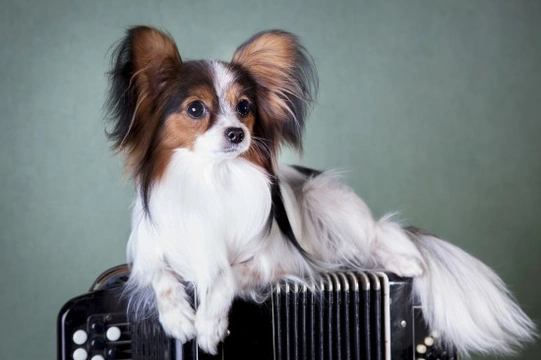
A Brief History of Man's Relationship With Dogs
The early hunter-gatherers of the world formed bonds with dogs many, many moons ago but little did they know just how strong the link they created would be to their descendants. Today, dogs are the most popular animals to keep as companions and loyal friends with many people the world over having come to rely on them in various ways and to varying degrees - of which some are life saving.
Early Britain & Attitudes to Dogs
However, in Britain dogs only really came into their own hundreds of years later in early 19th century, before that dogs were still seen as utilitarian animals that were best used for hunting and guarding. Dogs were never seen or kept as pets before the Victorian era. In fact, in the Middle Ages anyone who kept a pet either a dog or a cat were thought of as witches – and they were burnt at the stake.
The Ancient Greeks Revered Their Dogs
However, in Ancient Greece, dogs were thought of rather differently. They were not seen a mere animals that could labour and work for man, but rather as affectionate creatures that provided their owners and keepers with lots of amusement and pleasure.
Dogs had a very special role in ancient Greece and were part of their society and mythology. The famous Cerberus was the dog whose role it was to guard the gates of Hades. Artemis the goddess had hunting dogs and citizens of ancient Greece kept dogs for protection and to hunt. To the ancient Greeks, choosing a puppy was a huge decision much as it is today.
Romans, Their Dogs Were Considered Members of a Family
In ancient Rome, dogs were thought of very differently as were many other animals. Dogs were religious symbols, they accompanied soldiers into battle and small dogs were a lady's companion.
The Egyptians & Their Beloved Dogs
The Ancient Egyptians kept many animals as pets, including their beloved dogs. Pharaohs had their favourite canines and there's much evidence of this seen in the superb murals found in ancient ruins and the pyramids of Egypt. Some Pharaohs had their beloved dogs buried with them in the outer chambers of their sacred burial sites, taking pride of place with other important people in the Pharaohs life.
The Chinese Emperors, Puppies & Wet Nurses
In the 12th century, Chinese Emperors kept dogs as pets and later in the 18th century there are records that show some puppies even had their own wet nurses as well as a team of eunuchs to look after them and all their needs. The ancient Chinese thought of dogs as honoured and cherished pets which they worshipped and pampered.
The Pekingese was much loved and prized by the people of the Chinese Imperial Court and were uniquely the companions of Emperors of the day. An ordinary Chinese person in ancient times was not permitted to own a Pekingnese – this right was reserved for the Imperial family. Sometimes around 200 of these small dogs would live in a palace at the same time with the Empress Dowager Cixi being one of the biggest fans – she owned more than 100 of these lion like small dogs.
The Victorians & Their Adored Pooches
It was the Victorians who took dogs as pets into their homes and hearts - but it is also the Victorians who are responsible for many of the genetic disorders we see in certain breeds of dog today. They were the first to create and produce “designer” dogs, which they bred so a breed had a fashionable look to them. Pugs were much favoured for this reason as were King Charles Spaniels and other cute looking lapdogs of the period.
However, it is to Victorian England that we owe so much thanks because it was at this time in our history that dogs were seen as acceptable companions to have in the home. Indeed, Florence Nightingale once remarked that owning a small pet “is often an excellent companion of the sick” and decades later, research has proved her right.
The Modern World & Dogs
Seeing eye dogs help the blind and it all started during World War I when these marvellous dogs helped injured service men. Today, there are hearing dogs for the deaf, seizure alert dogs and canines that help disabled people. In fact, in a very short time in the history of the world, man has learnt a lot about how dogs can help them whether in sport, entertainment, companionship, physical well-being and how a dog can help them stay safe, guarded by their loyal canine friends.
Dogs have so many roles in the modern world, whether they are working dogs on a farm in the countryside, dogs that work alongside the military, rescue organisations and the medical profession, the one constant is that dogs have always been known as “man's best friend” and they have proved this to be true many times over throughout the history of man.
Conclusion
Today, in a fast moving modern world, dogs have found a superb place in the lives of many people. They help their owners in so many different ways, keeping them fit, lowering a person's cardiovascular rate and reducing the stresses of modern day life but most of all, it is the pure pleasure a dog brings into a person's life.



